Parchment Manufacture
The manuscript books are normally written on parchment made from goatskin.
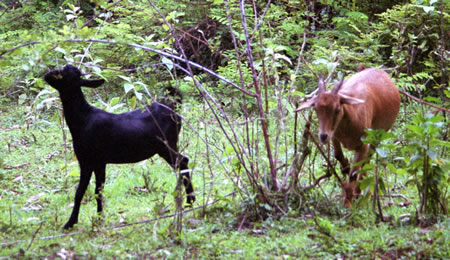 |
Ethiopian goats Jimma, July 2002 |
To make the parchment, the goatskin, which can be used either fresh or dried, is soaked in pure water for about seven to ten days before stretching and drying on a frame. Unlike parchment made in Western Europe, no chemicals such as lime are added to remove the hair.
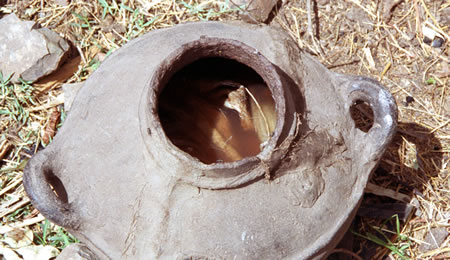 |
Goatskin soaking in water pot, Merigita Fenti Indelew, Debre Kera Maryam, April 2001 |
After soaking, the skin is tied to a wooden parchment frame using support poles, a technique that is possibly unique to Ethiopia.
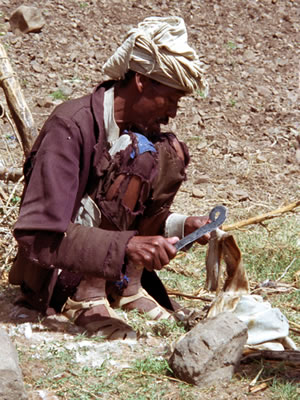 |
Cutting slits along the edges of the skin Merigita Fenti Indelew, Debre Kera Maryam, April 2001 |
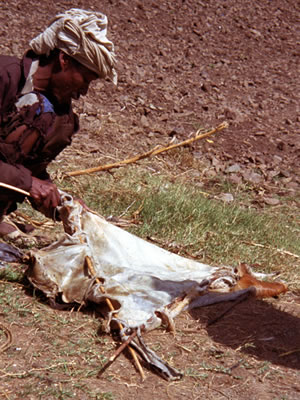 |
Threading the support poles (chinbar weyim lebeq) through the slits in the skin, Merigita Fenti Indelew, Debre Kera Maryam, April 2001 |
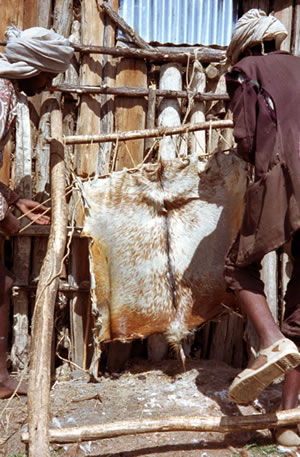 |
Threading the support poles (chinbar weyim lebeq) through the slits in the skin, Merigita Fenti Indelew, Debre Kera Maryam, April 2001 |
Whilst still wet the flesh side is scraped and cleaned using a special curved knife and pumice stone.
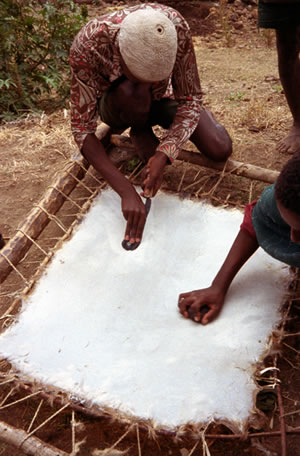 |
Using a curved knife (mafefiya kara) and pumice stone (meramemi dengay) to clean the flesh side and remove fat, Qés Gtu Biruh, Debre Kera Maryam, April 2001 |
The skin is carefully stretched tight on the frame and then left for one or two days to dry.
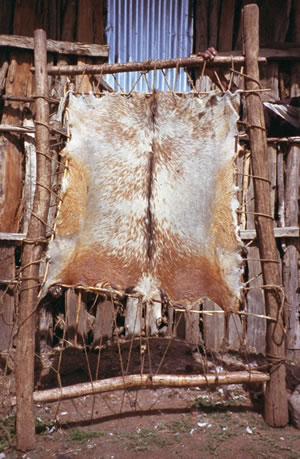 |
Goat skin mounted on frame, Debre Kera Maryam, April 2001 |
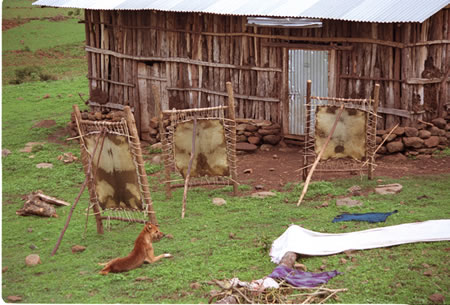 |
Frames with skins drying in the sun, Zeboye Mikael, July 2002 |
When dry, an adze like tool is used to remove the hair and to thin the parchment.
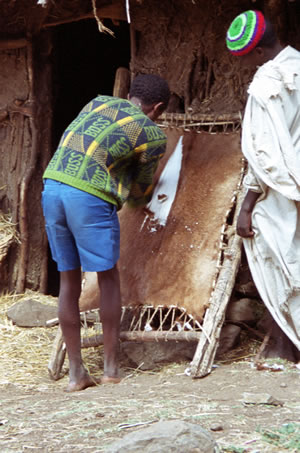 |
Using the adze like tool (metrebiya melacha) to remove the hair and to thin the parchment Melkamu Ewenatu, Gimb Giyorgis, April 2001 Qés Misganew Asaye, Gimb Giyorgis, April 2001 |
The flesh side is cleaned again by sprinkling with a little water and scraping with the curved knife and pumice stone.
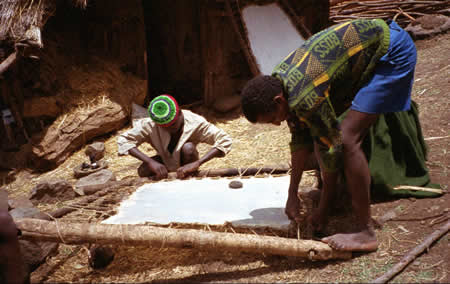 |
Preparation for final cleaning of the flesh side with the curved knife, pumice stone, and, sometimes, a little soapy water. During this time the tension is carefully controlled by tightening or loosening the ropes around the edges Melkamu Ewenatu and Qés Misganew Asaye, Gimb Giyorgis, April 2001 |
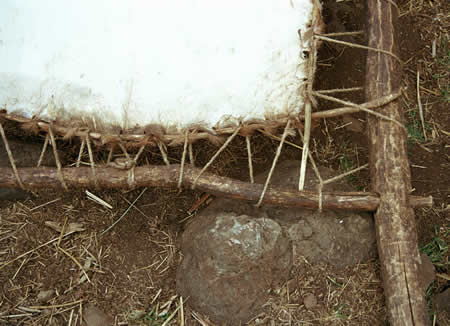 |
Detail showing method of tying the skin to the frame, Qés Misganew Asaye, Gimb Giyorgis, April 200 |
Sheets of parchment are cut from the skin using a template to mark the required size and are then folded in half.
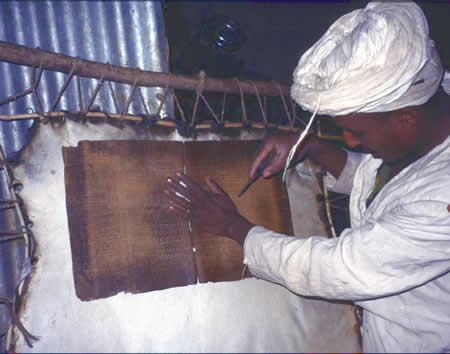 |
Using a template to mark where sheets of parchment will be cut from the skin. Holes are pricked using an awl (mekafiche) to mark the corners of the sheets, Qés Misganew Asaye, Gimb Giyorgis, July 2002 |
Small holes, which mark the position of each line and column of text, are pricked along the edges of the parchment section. A blunt instrument, such as the back of a knife, is used to score faint lines to join the holes.
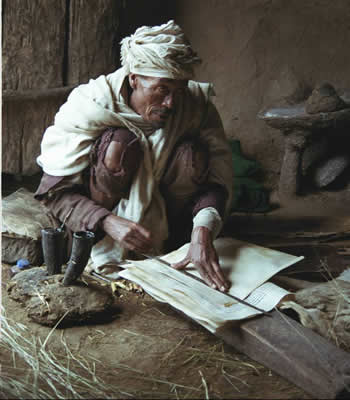 |
Marking column positions by scoring lines with a ruler and a blunt instrument Merigita Fenti Indelew, Debre Kera Maryam, April 2001 |
Four, or sometimes five, folded sheets are tied together to form a section. A typical book will contain between six and sixteen sections.
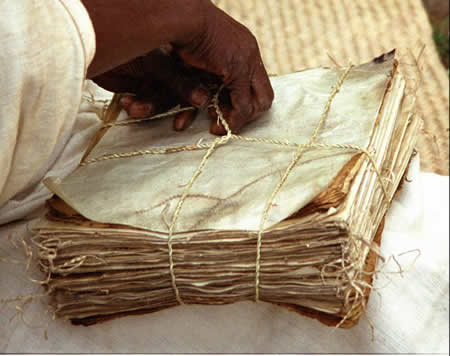 |
Bundle of book sections showing ties holding folded sheets together Qés Fenti Mehret, Galawdiwos, December 2000 |